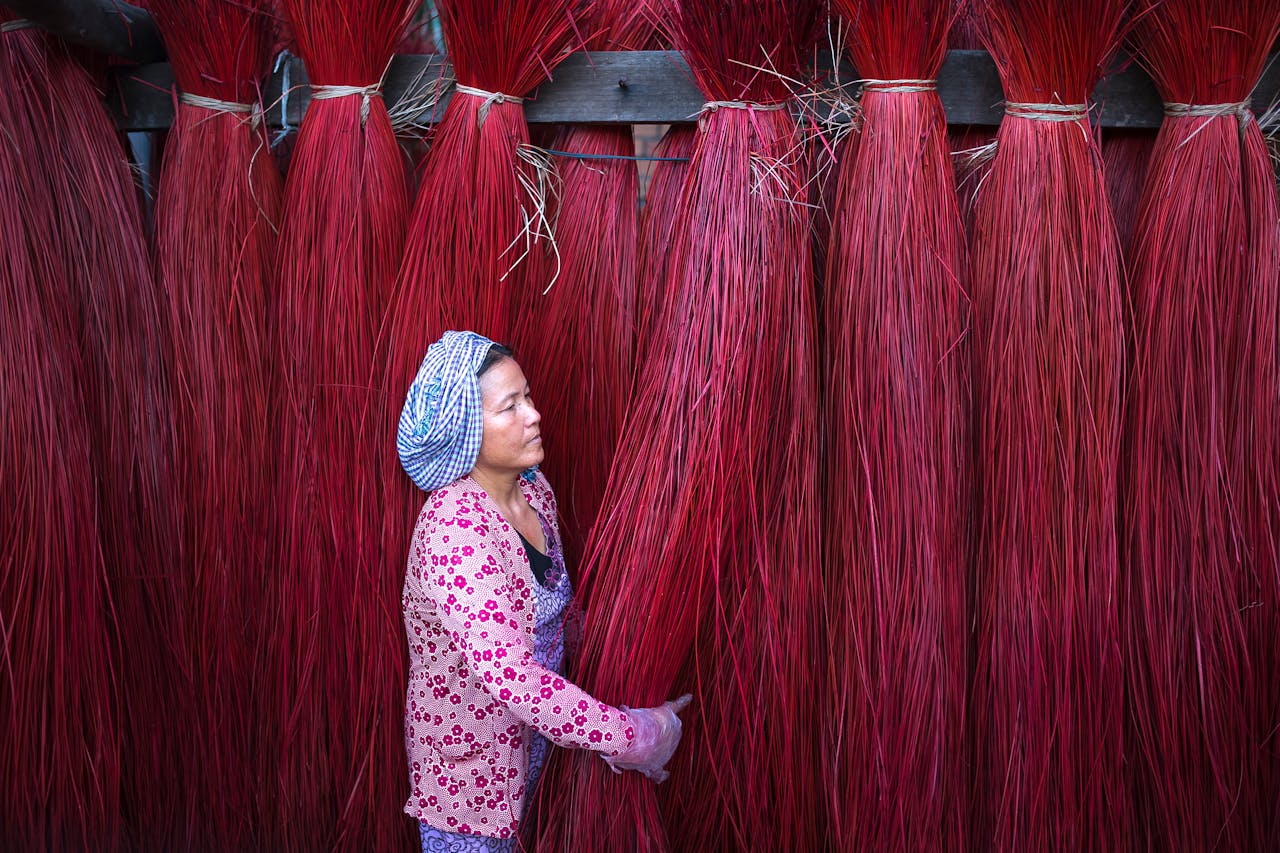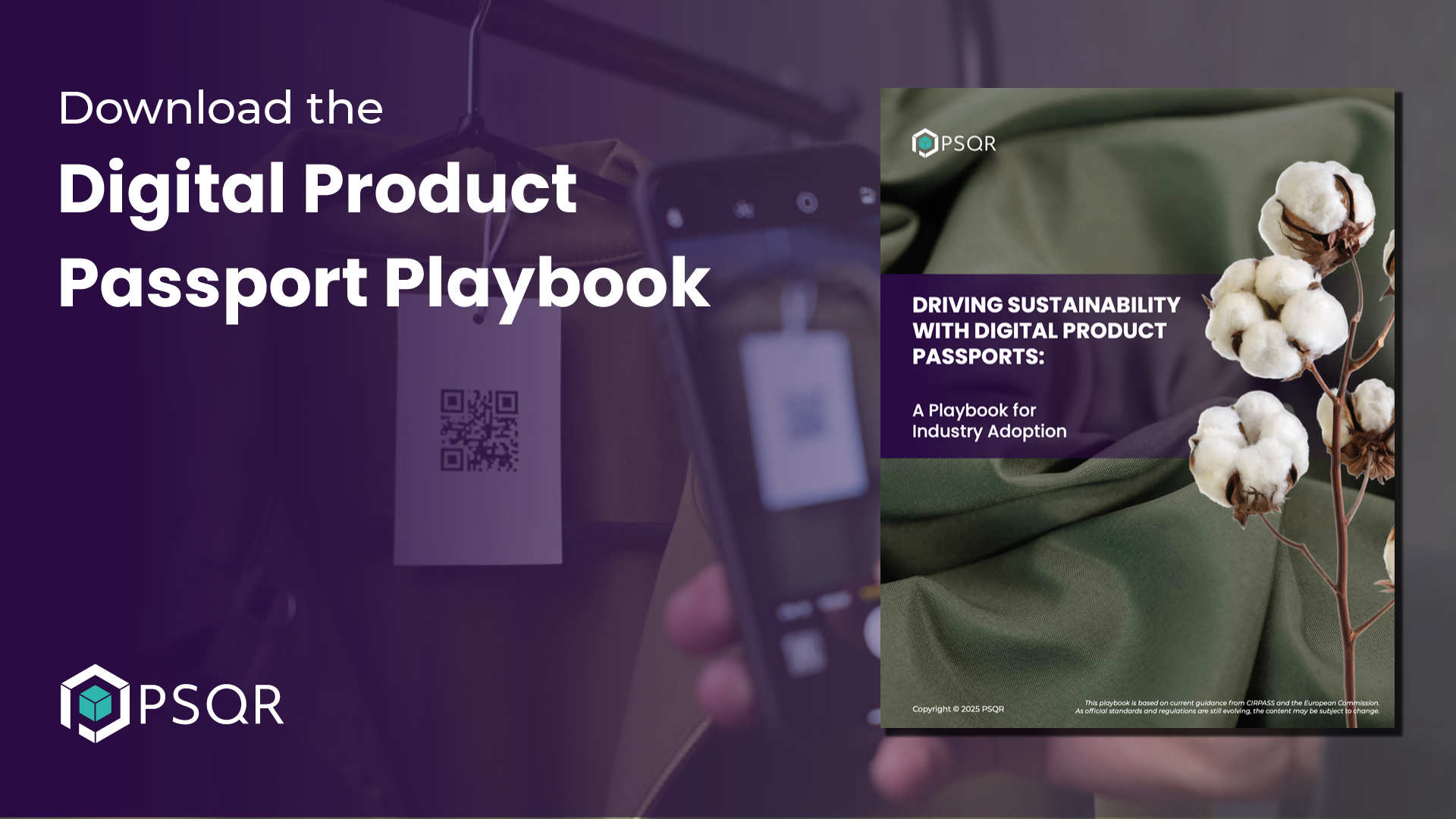The textile industry is currently facing a number of significant transformations in response to various environmental and social concerns. One of the leading movements affecting the industry is undoubtedly the Digital Product Passport regulation—the EU initiative aiming to shift toward a circular economy, reduce waste, and create more transparency within supply chains.
However, the Digital Product Passport regulation is not the only initiative. Various countries have introduced their own laws and regulations targeting different areas, from waste management, packaging, and increased sustainability to addressing child labour and modern slavery.
In this article, we will review the most prominent regulations and initiatives across countries and what businesses must do to comply with them.
Digital Product Passport
A digital product passport in the textile industry will provide comprehensive information about a garment or textile product throughout its lifecycle. This digital record will include details on the:
- Origin of materials
- Manufacturing processes
- Environmental impact
- End-of-life options
By using QR codes or similar technologies, consumers, manufacturers, and regulators can easily access data on sustainability, ethical sourcing, and recycling possibilities.
The digital product passport aims to enhance transparency, help ensure regulatory compliance, and support the circular economy by enabling better recycling and reuse of textile products.
Some of the key advantages that the Digital Product Passport will offer to businesses include:
1. Enhanced Transparency and Traceability
Digital Product Passports provide detailed information about each stage of the product lifecycle, from raw materials to production, distribution, and disposal. This helps companies obtain visibility across supply chains, which, in turn, helps with product tracking and reduces unnecessary recalls and product waste.
Furthermore, by offering detailed product information (materials used, production methods, sustainability credentials, etc.), DPPs help build consumer trust and promote informed purchasing decisions.
2. Sustainability and Circular Economy
Increasing sustainability in the textile industry is one of the main goals of the Digital Product Passport regulation.
Therefore, DPPs encourage manufacturers to adopt sustainable practices by making environmental and social impacts more transparent. This can drive industry-wide improvements in sustainability.
Similarly, with detailed information on material composition and recycling instructions, DPPs facilitate better recycling and reuse of textiles, supporting a circular economy.
3. Regulatory Compliance
Although a regulation on its own, DPPs will increasingly help companies comply with regulations and standards across countries by providing a standardized way to document and report product information.
Additionally, this will also be beneficial in simplifying audits and inspections.
With enhanced traceability practices, the DPPs can significantly reduce counterfeiting and ensure that only genuine products reach consumers, thus protecting brand integrity and intellectual property.

Image by Pexels
4. Operational Efficiency
Improving operational efficiency is one of the main challenges in complex supply chains.
However, the digital product passport regulation will bring a lot of improvements for businesses in this regard.
Two of the main improvements can be seen in inventory management and making data-driven decisions:
- Inventory Management: Improved tracking of products through the supply chain can lead to better inventory management, reducing waste and optimizing stock levels.
- Data-Driven Decisions: Access to detailed product data allows companies to make more informed decisions regarding production, marketing, and sales strategies.
5. Innovation and Competitiveness
The transparency and data provided by digital product passports can drive innovation in:
- product design,
- materials, and
- manufacturing processes
as companies strive to improve their environmental and social performance.
As these aspects become reality, they will help companies gain a competitive advantage and start differentiating themselves in the market by demonstrating a commitment to transparency, sustainability, and quality, attracting environmentally conscious consumers.
6. Consumer Engagement and Education
With regards to consumer engagement and education, Digital Product Passpots offer an interactive way to learn about the products consumers buy, which can enhance brand engagement and loyalty.
Moreover, by providing detailed product information, consumers can make more informed choices and support brands that align with their values.
Overall, in addition to the requirements for regulatory compliance with the DPP regulation, implementing Digital Product Passports in the textile industry can lead to a more transparent, sustainable, and efficient sector, benefiting manufacturers, consumers, and the environment alike.

Image by Pexels
8 regulations from different countries affecting the textile industry
As previously noted, the textile industry is subject to numerous regulations worldwide that aim to enhance sustainability, transparency, and safety standards, with the Digital Product Passport being a particularly significant example.
Below is a list of regulations and initiatives in various countries that businesses operating in these regions should be aware of:
1. German Supply Chain Due Diligence Act
In 2021, the German Parliament enacted the Act on Corporate Due Diligence Obligations in Supply Chains (Gesetz über die unternehmerischen Sorgfaltspflichten in Lieferketten, LkSG), legally mandating German enterprises to uphold human rights in their global supply chains.
The Act obliges enterprises in Germany to implement specified due diligence measures to respect human rights. It applies to:
- Enterprises with their central administration,
- Principal place of business,
- Administrative headquarters,
- Statutory seat, or
- Branch office in Germany.
The Act initially affected enterprises in Germany with at least 3,000 employees starting in 2023 and will extend to those with at least 1,000 employees starting in 2024.
The Act on Corporate Due Diligence Obligations in Supply Chains (LkSG) significantly impacts the textile industry by mandating German companies to ensure human rights compliance throughout their global supply chains. This requires textile businesses to enhance transparency, conduct supplier audits, and implement robust due diligence processes, thereby mitigating legal, financial, and reputational risks associated with non-compliance.
2. Dutch Child Labor Due Diligence Act
The Dutch Child Labour Due Diligence Act was passed by the Dutch Senate in 2019. It became effective in mid-2022 and mandates that companies examine their supply chains for child labor, and if found, take steps to mitigate and prevent it.
To comply with the Act, firms must:
- Investigate their supply chains for any indications of child labour.
- Develop and implement a plan of action to eliminate child labour if identified.
- Create an action plan to prevent the future use of child labour.
- Submit a declaration to a designated regulatory body, confirming their due diligence efforts.
In the textile industry, this regulation necessitates rigorous supply chain audits and the development of comprehensive action plans to address and prevent child labour.
3. UK and Australia’s Modern Slavery Acts
The Modern Slavery Act is a leading piece of global legislation addressing modern slavery and human trafficking in the UK.
While not all sections are directly relevant to businesses, section 54, titled ‘Transparency in Supply Chains,’ has a significant impact on the corporate sector. Effective from 29th October 2015, the Act requires many businesses to disclose a ‘slavery and human trafficking statement‘.
In their modern slavery statement, companies must cover several key areas:
- Structure, Business, and Supply Chain: Describe the nature of the business, its supply chain operations, the extent of its network, and any affected countries or communities.
- Policies on Modern Slavery: Explain the company’s stance on forced labour and how it enforces this policy in practice.
- Risk Assessment, Prevention, and Mitigation: This section details the methods used to identify and address risks associated with modern slavery.
- Due Diligence: Outline the steps taken to confirm findings and actions related to modern slavery.
- Effectiveness: Demonstrate the impact of policies and measures implemented.
- Training and Capacity Building: Describe efforts to educate employees about modern slavery, expand policies, identify risks, and increase awareness.
Companies are also required to show continual improvement in their reports, detailing the impact of previous policies and outlining future enhancements.
The Modern Slavery Act significantly affects the textile industry by mandating greater transparency and accountability in supply chains. Textile companies must investigate and report on labour practices, ensure compliance with anti-slavery policies, and continually improve their efforts to combat modern slavery.
This includes:
- Auditing suppliers
- Implementing robust risk mitigation strategies
- Educating employees
The emphasis on transparency and continual improvement aims to foster a more ethical and responsible textile industry.

Image by Pexels
4. French AGEC Regulative
The Anti-Waste Law for a Circular Economy (AGEC) is designed to shift production and consumption models to reduce waste and conserve natural resources, biodiversity, and climate.
Law number 2020-105, enacted on February 10, 2020, represents a major advance in the ecological transition. It particularly impacts the textile sector (clothing, linen, and footwear), which is increasingly focused on sustainable development.
This legislation seeks to transform the traditional linear economy of “produce, consume, dispose” into a circular economy through five key areas:
- Eliminating single-use plastics.
- Enhancing consumer information.
- Reducing waste and encouraging solidarity-based reuse.
- Addressing planned obsolescence.
- Improving production practices.
The AGEC law introduces several measures that are already being implemented in France, with the overarching goal of eradicating waste across all sectors.
Moreover, AGEC will significantly impact the textile industry by enforcing stricter regulations on waste reduction and promoting circular practices.
Textile companies will need to adapt by:
- Reducing the use of disposable plastics
- Improving product design to enhance durability and recyclability
- Implementing robust recycling and reuse strategies
- Improving transparency and consumer information about their sustainability efforts
- Addressing planned obsolescence
- Aligning their production processes with circular economy principles.
This will drive the industry toward more sustainable practices but may also increase operational costs and require substantial changes in supply chain management.
5. Uyghur Forced Lavor Prevention Act (UFLPA)
The Uyghur Forced Labor Prevention Act (Public Law No. 117-78), also known as the UFLPA, mandates the Forced Labor Enforcement Task Force to develop a strategy for enforcing the ban on importing goods into the United States that are wholly or partially produced using forced labour in the People’s Republic of China, particularly from the Xinjiang Uyghur Autonomous Region.
The UFLPA establishes a rebuttable presumption that any goods produced in whole or in part in Xinjiang or by specified entities are prohibited from entry into the U.S. under Section 307 of the Tariff Act of 1930.
This presumption holds unless U.S. Customs and Border Protection (CBP) confirms through clear and convincing evidence that the goods were not produced using forced labour or that the UFLPA does not apply.
Impact on the Textile Industry:
The UFLPA will significantly affect the textile industry by imposing strict regulations on the importation of goods suspected to be linked to forced labour in Xinjiang. Textile companies will need to ensure their supply chains are free from forced labour practices, particularly those associated with this region.
This may require increased due diligence, enhanced supply chain transparency, and documentation to prove the absence of forced labour. Non-compliance could lead to goods being barred from entry into the U.S., potentially disrupting supply chains and impacting business operations.
6. Packaging and Waste Directive
EU regulations on packaging and packaging waste address both the design of packaging and the management of packaging waste. These rules are designed to tackle the growing issue of packaging waste and its environmental impact while also removing barriers created by varying national packaging regulations across EU countries.

Image from Unsplash
The Packaging Directive aims to:
- Harmonize national regulations on packaging and packaging waste management.
- Provide a high standard of environmental protection.
- Ensure the smooth functioning of the internal market.
The latest amendments to the Directive introduce updated measures to:
- Prevent the generation of packaging waste.
- Encourage the reuse, recycling, and recovery of packaging waste rather than its disposal.
These EU packaging regulations will significantly impact the textile industry by requiring companies to redesign packaging to minimize waste and enhance recyclability.
Textile businesses will need to adapt by implementing sustainable packaging solutions and improving waste management practices.
Regulatory compliance will involve investments in new technologies and processes, potentially increasing operational costs but also offering opportunities for innovation and market differentiation through environmentally friendly practices.
7. National Recycling Targets
As Europe works towards becoming a circular economy, the EU is setting ambitious targets for its 27 Member States (EU-27) to boost recycling rates and reduce landfilling.
The EU aims for 55% of municipal waste and 65% of packaging waste to be either reused or recycled by 2025. This briefing evaluates the likelihood of Member States achieving these targets and serves as the foundation for the European Commission’s 2023 early warning report.
These EU recycling targets will significantly impact the textile industry by necessitating increased efforts in waste management and recycling. Textile companies will need to develop and implement more effective recycling programs and sustainable practices to meet these targets. This may involve:
- Redesigning products for better recyclability
- Improving waste segregation processes
- Investing in new technologies for waste reduction
Compliance will not only help companies avoid potential penalties but also align with the growing consumer demand for sustainable and environmentally responsible products.
8. CO2 and Product Environmental Footprints
Companies, particularly SMEs, often struggle with accurately assessing and communicating their environmental performance due to a lack of resources.
The Product Environmental Footprint (PEF) and Organisation Environmental Footprint (OEF) methods, collectively referred to as Environmental Footprint methods, address this challenge.
These methods offer detailed guidelines for modelling, calculating, and reporting the life cycle environmental impacts of products and organizations.
Based on established international standards such as ISO 14000/44, the Environmental Footprint methods are crucial for promoting a more sustainable economy. They equip both producers and buyers with the necessary tools to make informed and environmentally responsible decisions.

Image from Pexels
For the textile industry, adopting Environmental Footprint methods will be essential for accurately measuring and reporting environmental impacts throughout the product lifecycle. This will require companies to implement robust systems for tracking and managing their environmental performance, which may involve additional training and investment.
By utilizing PEF and OEF, textile businesses can:
- Better align with sustainability goals,
- Enhance transparency,
- Meet increasing consumer and regulatory demands for detailed environmental reporting.
This will not only help in mitigating environmental impact but also improve market competitiveness through credible sustainability claims.





